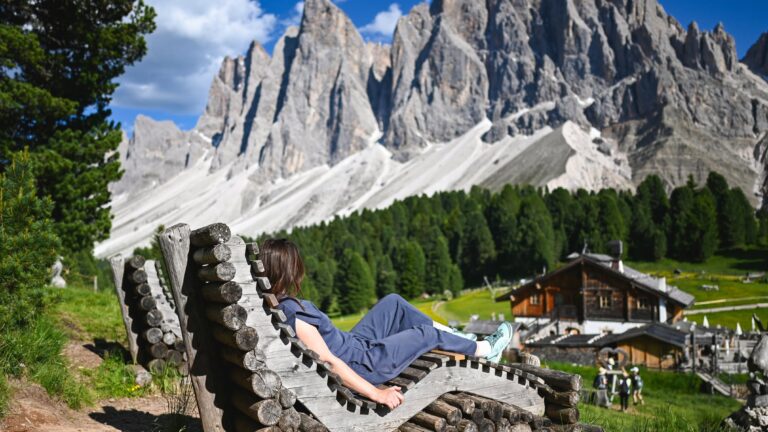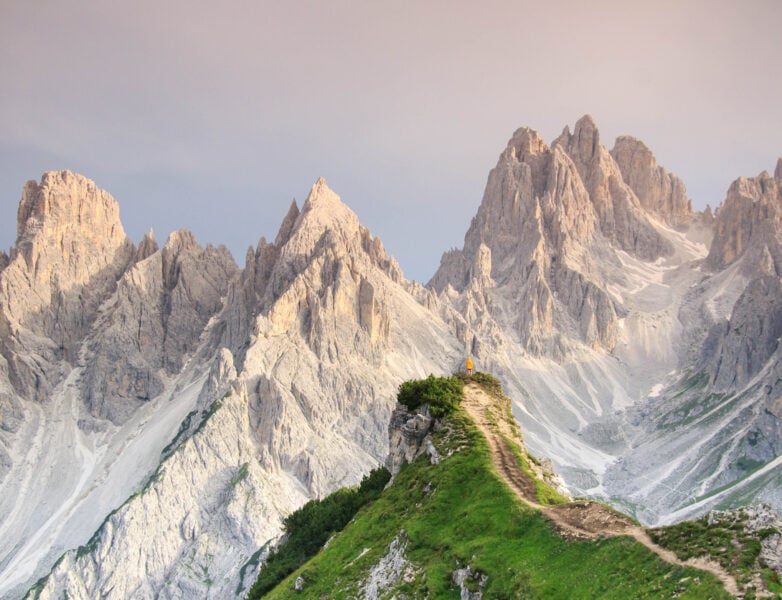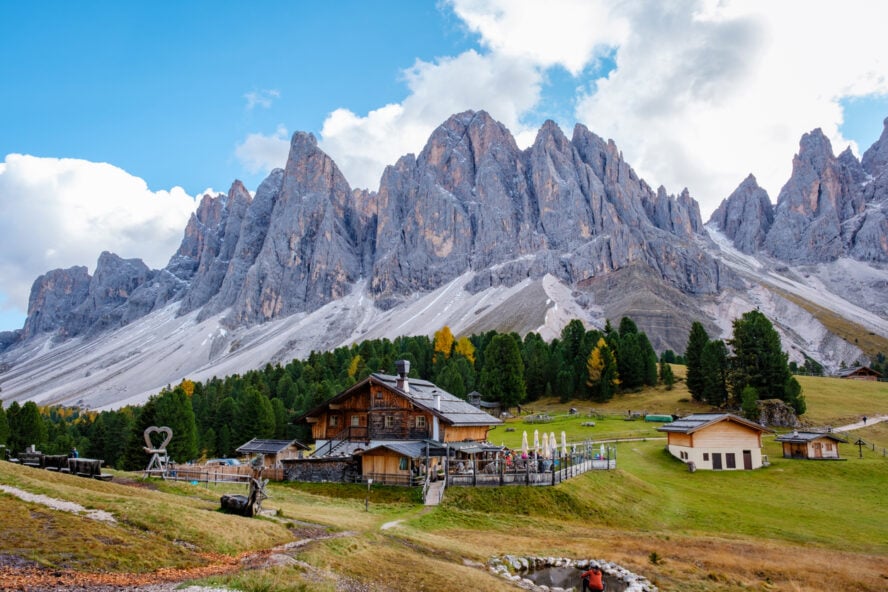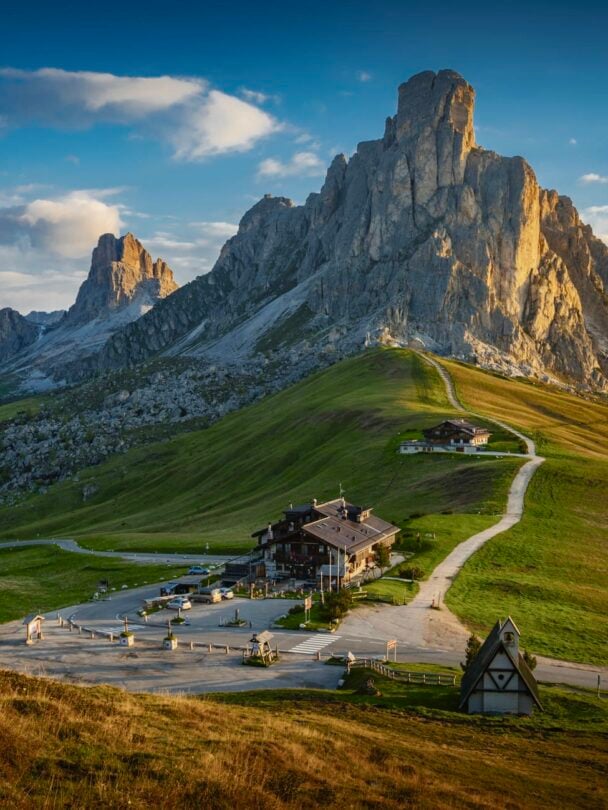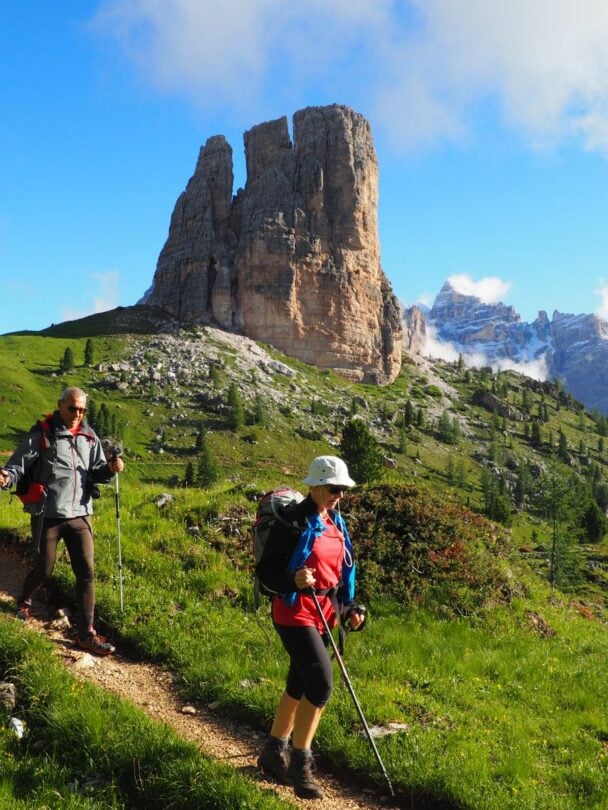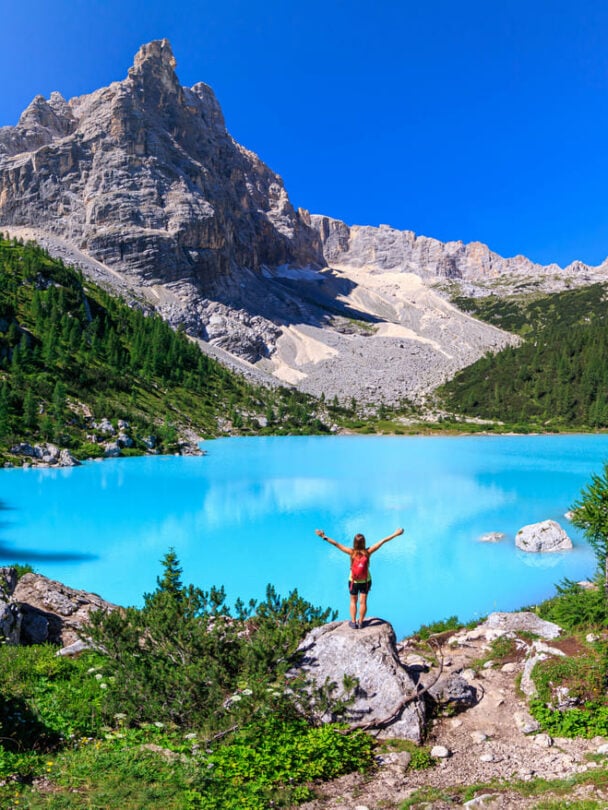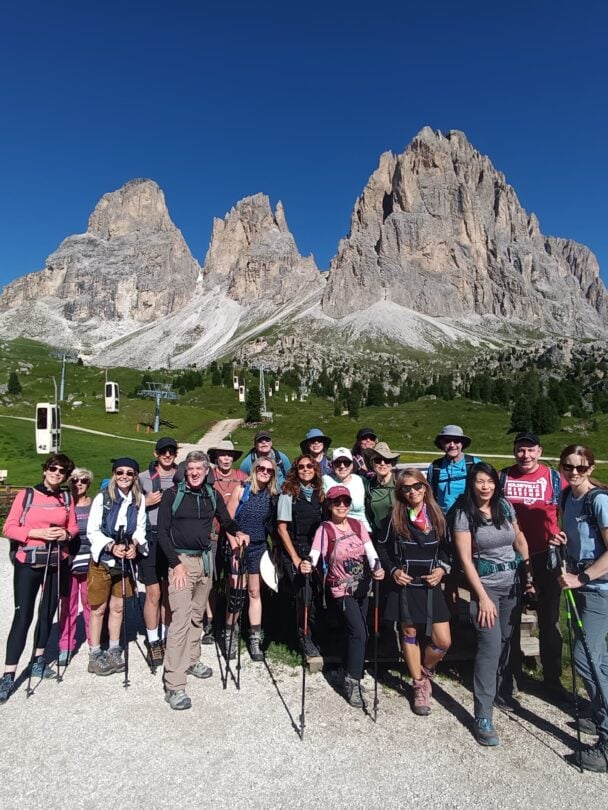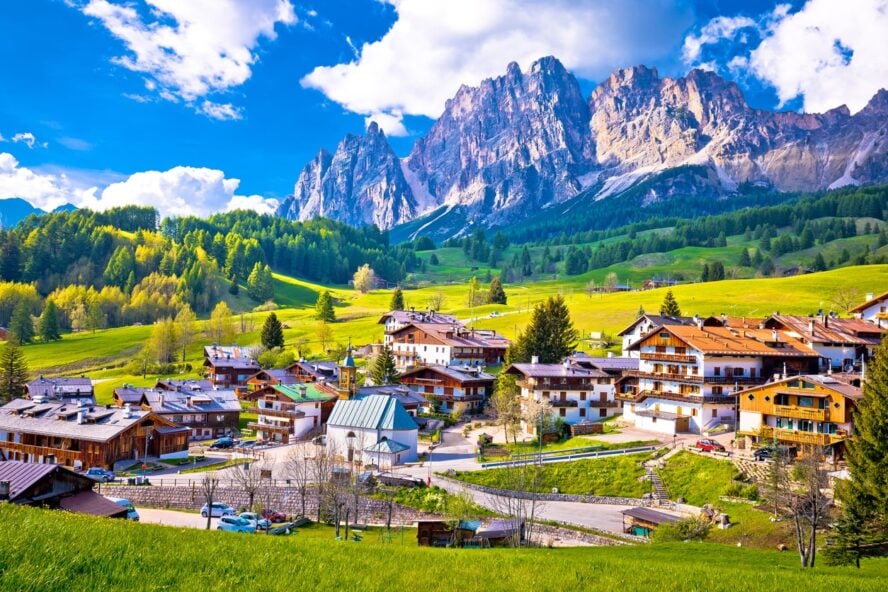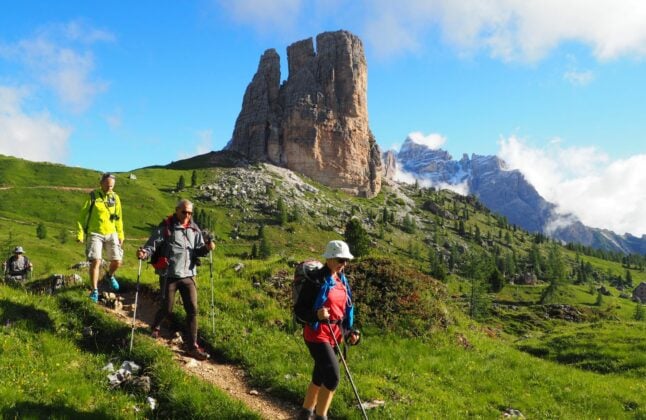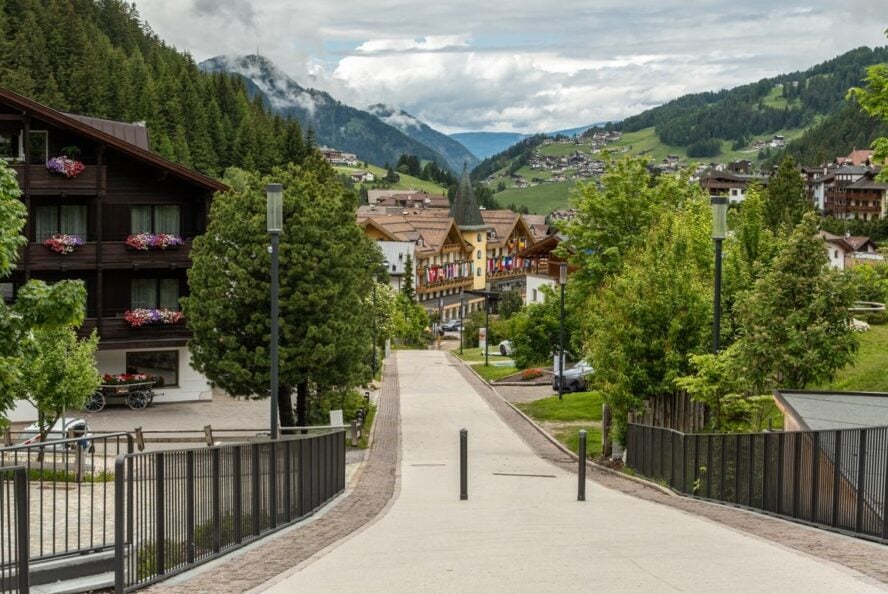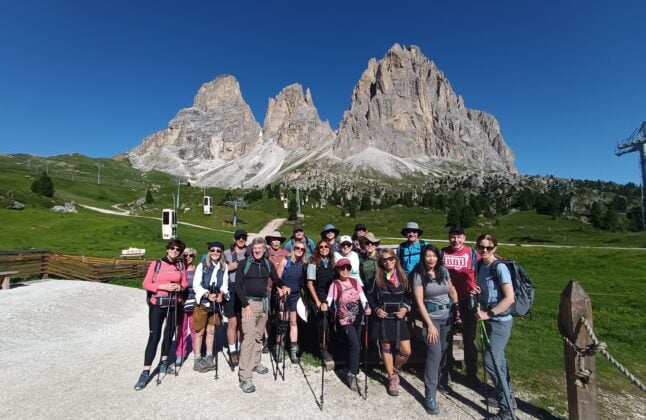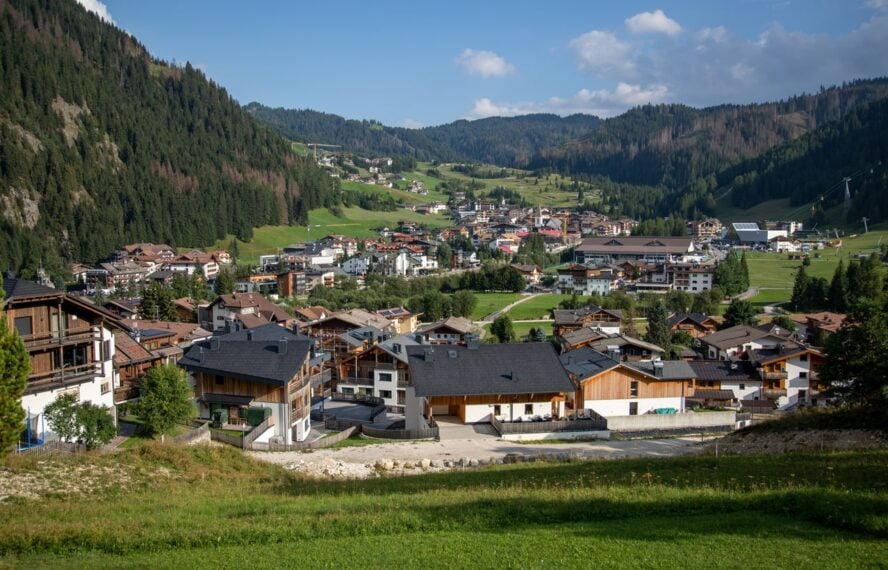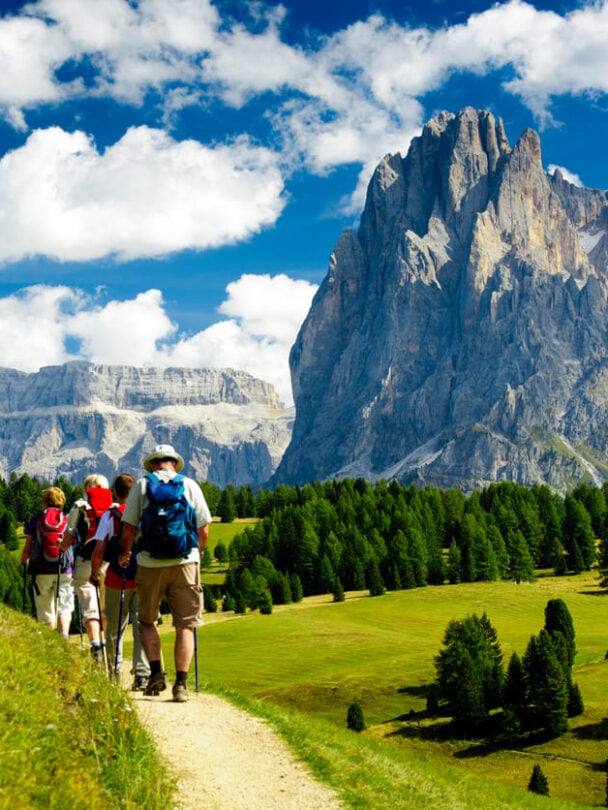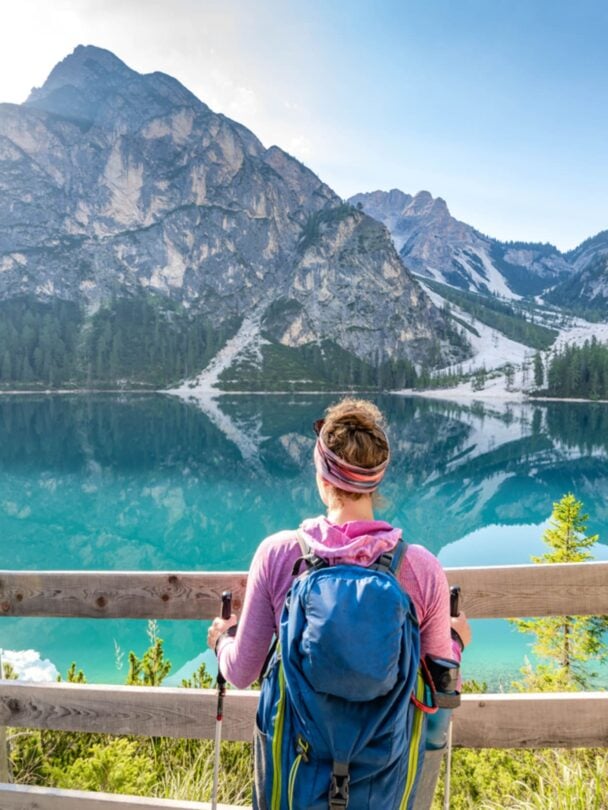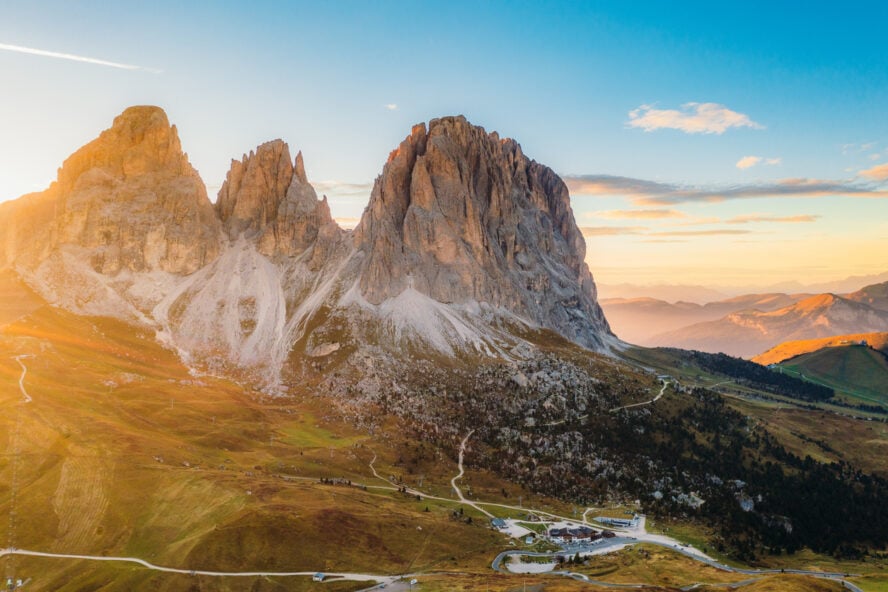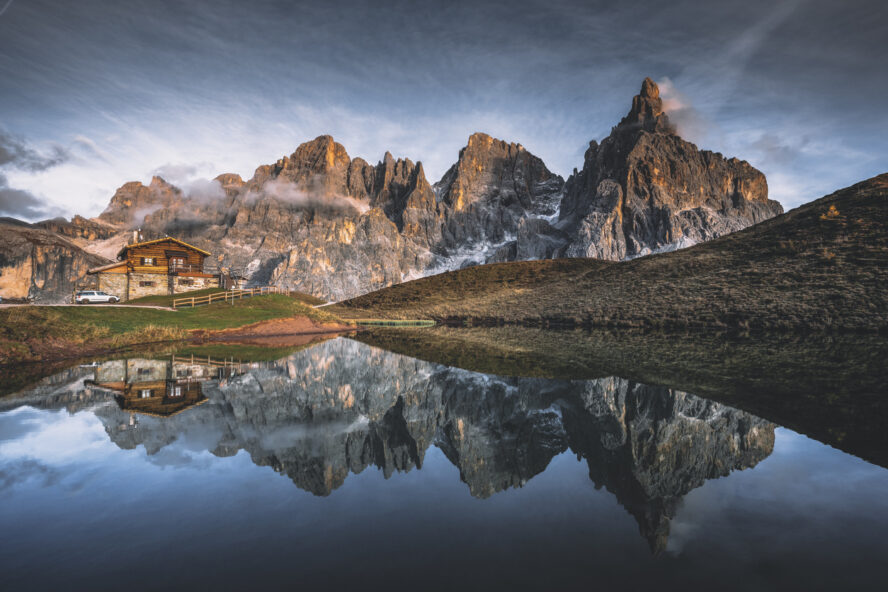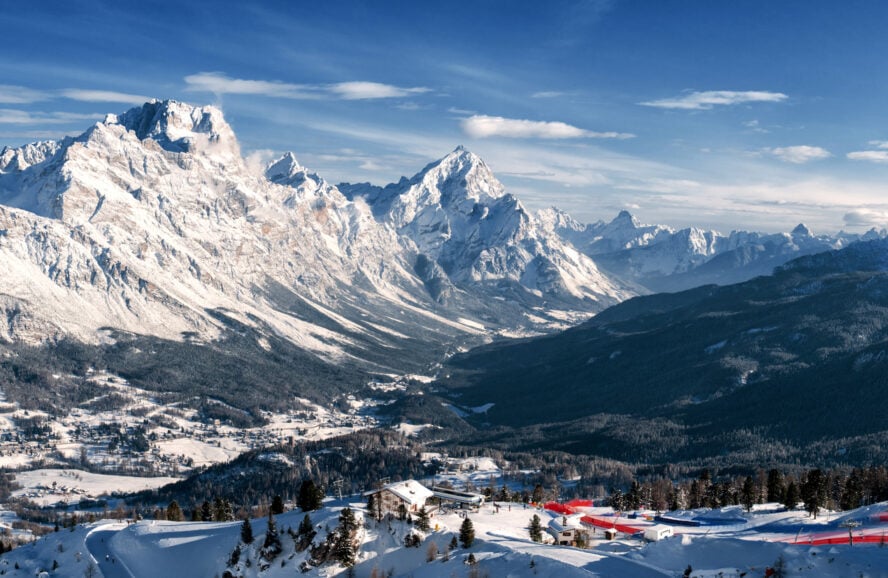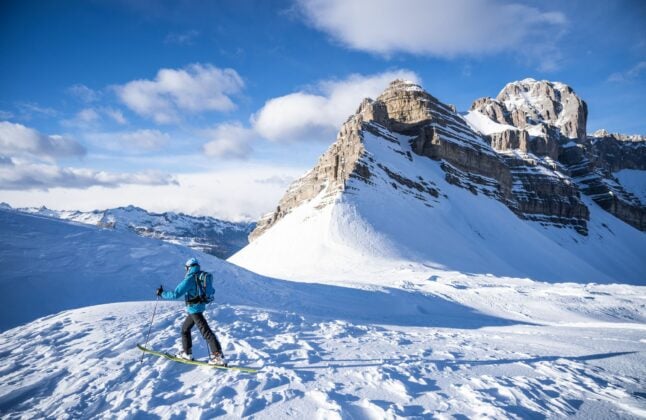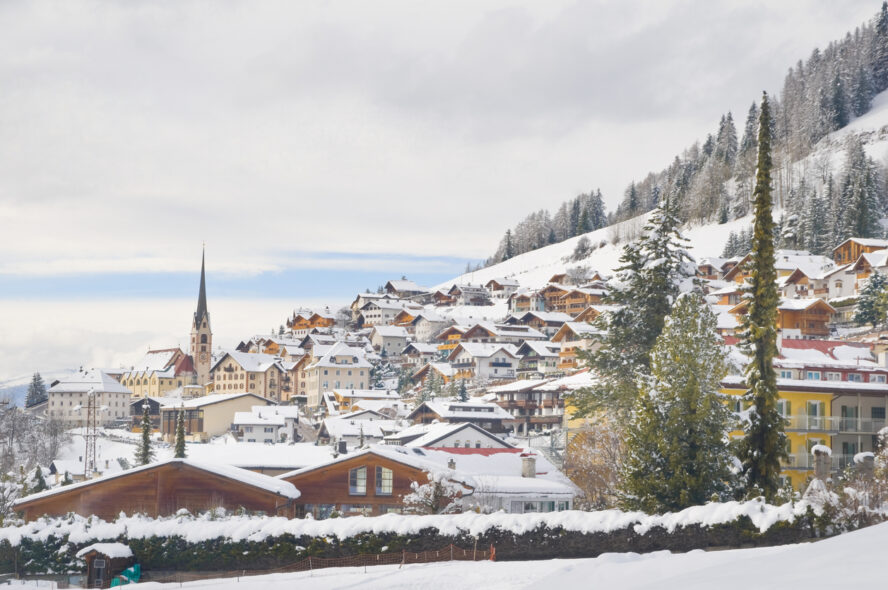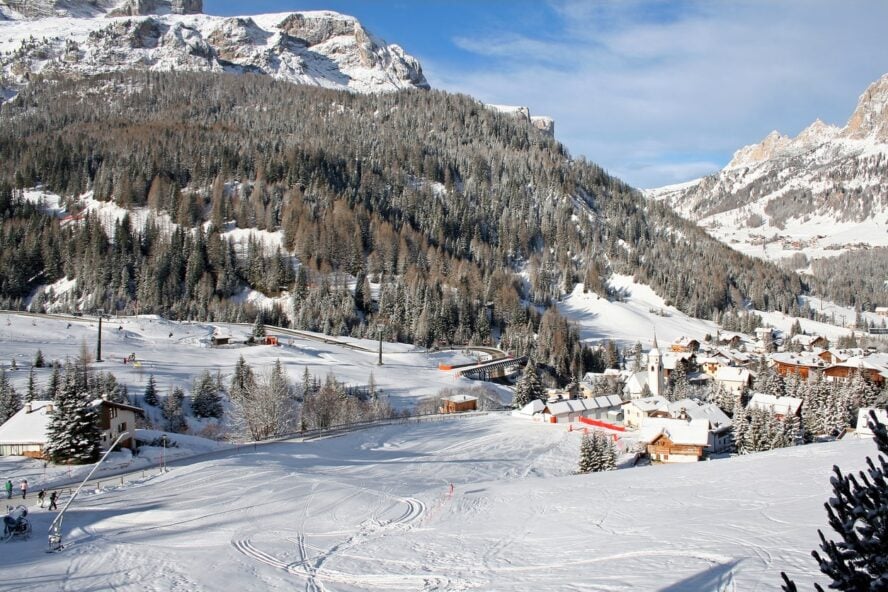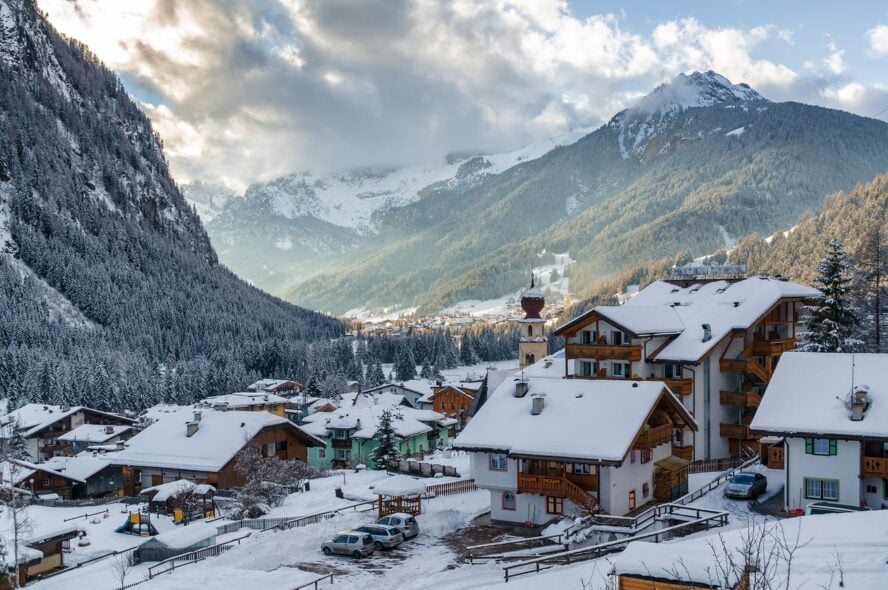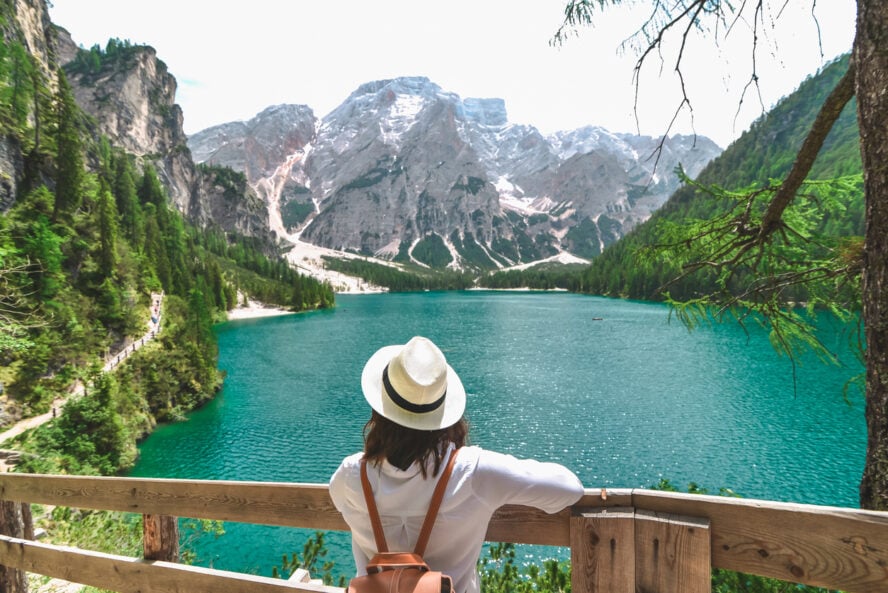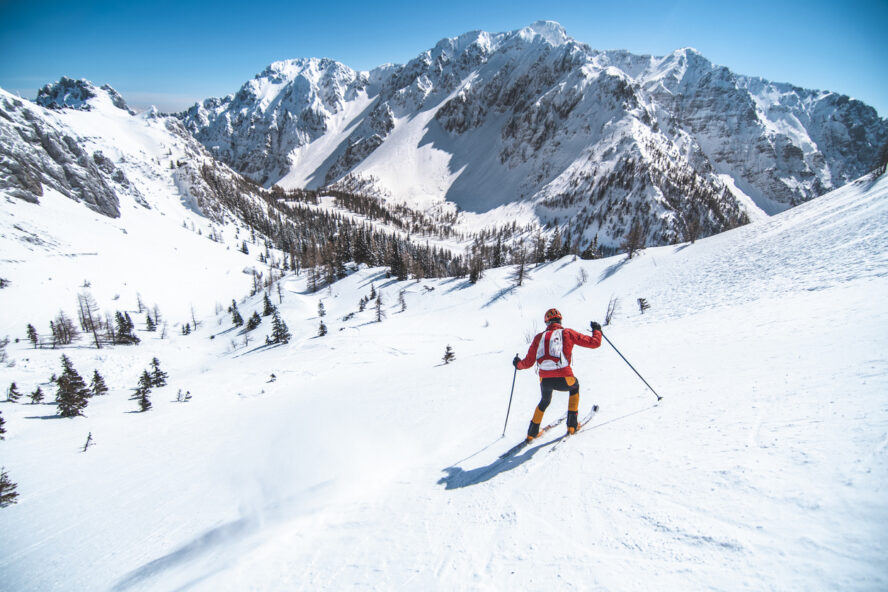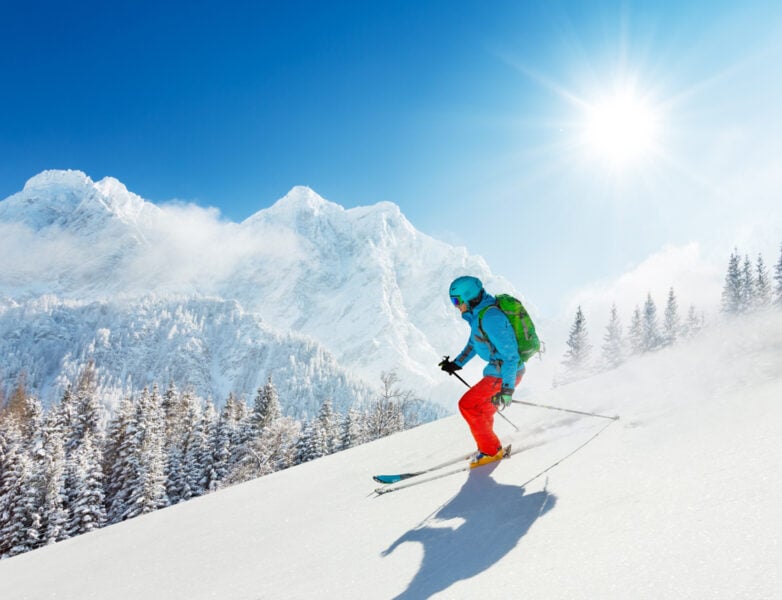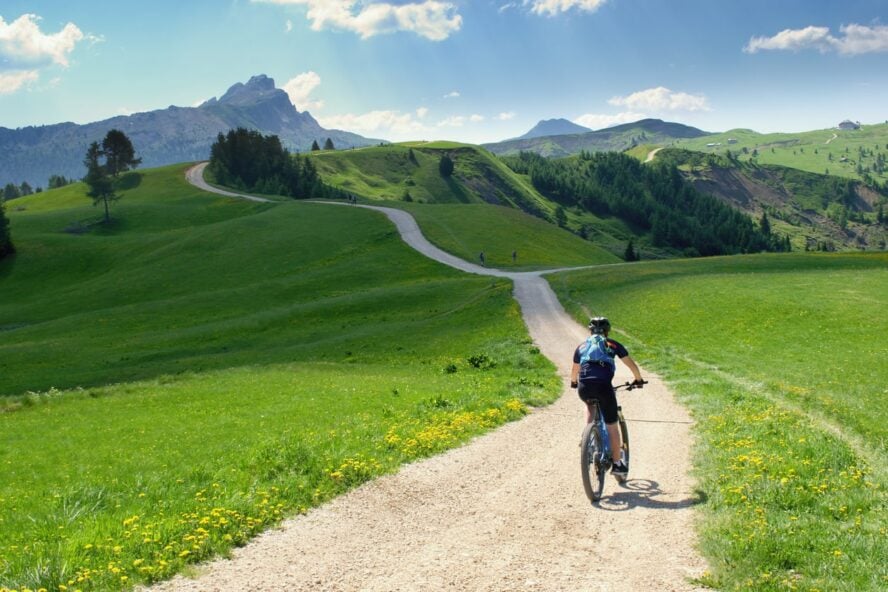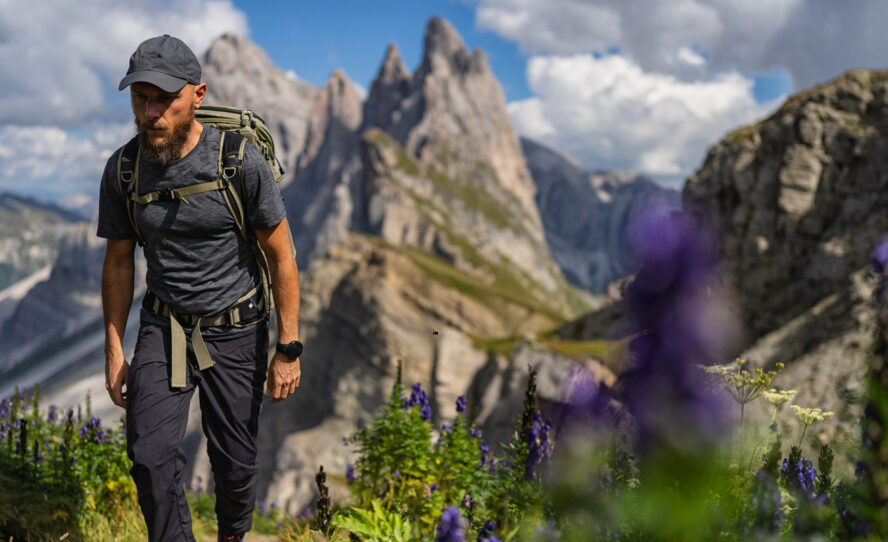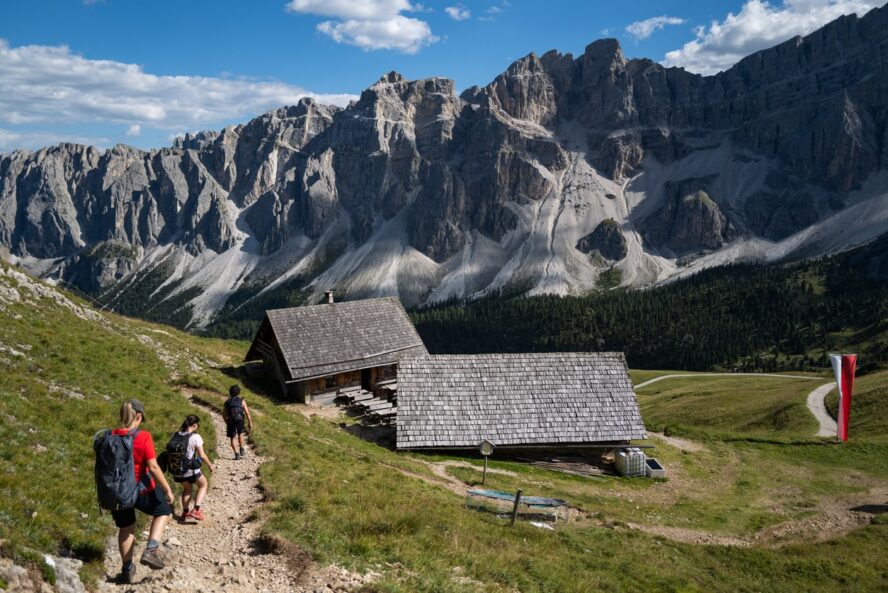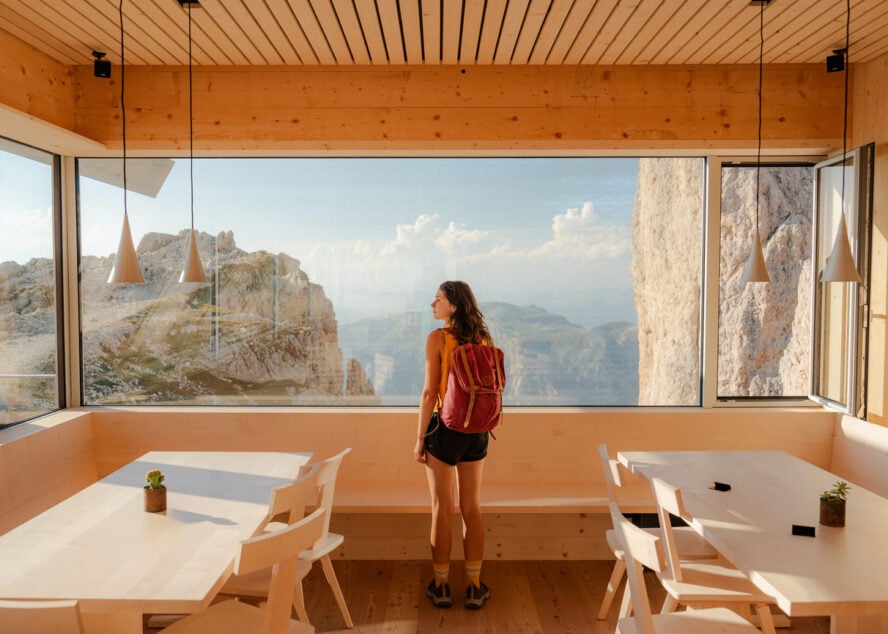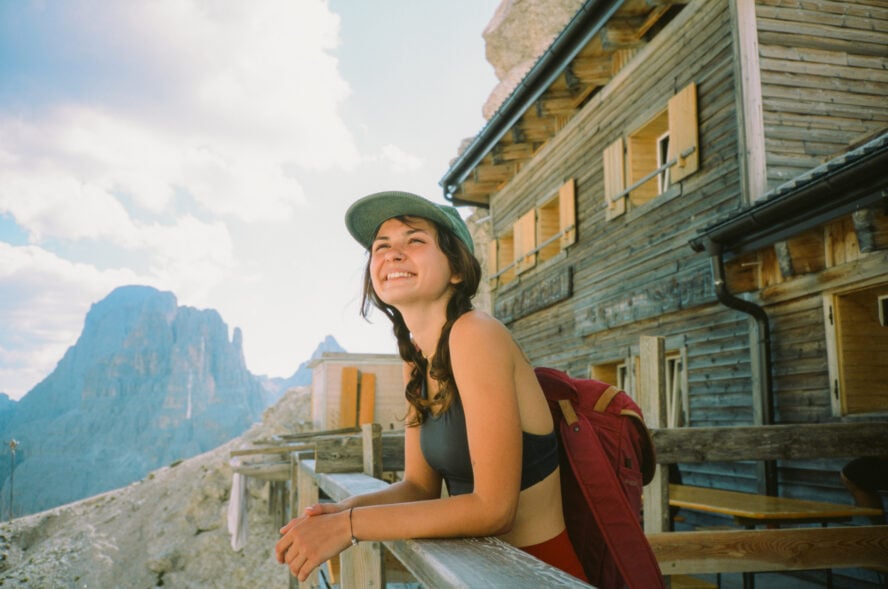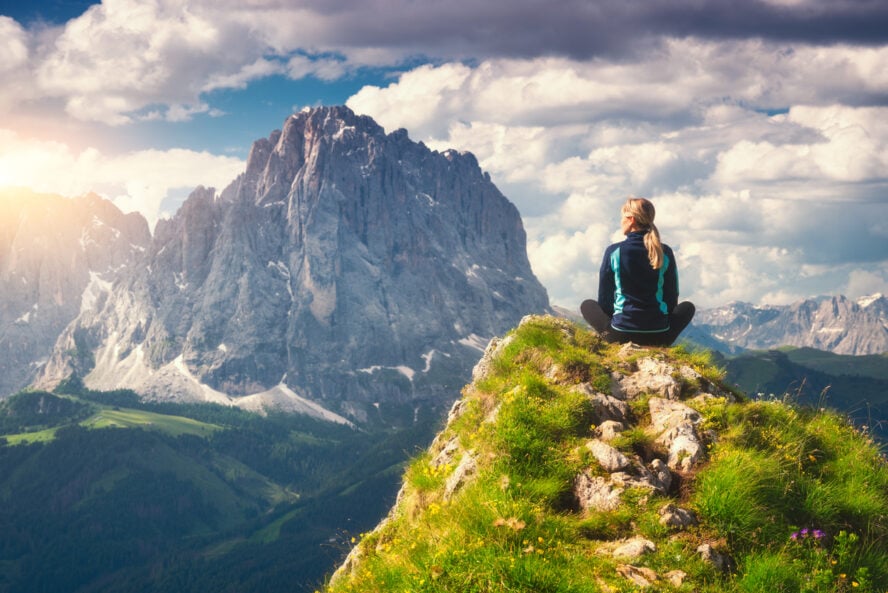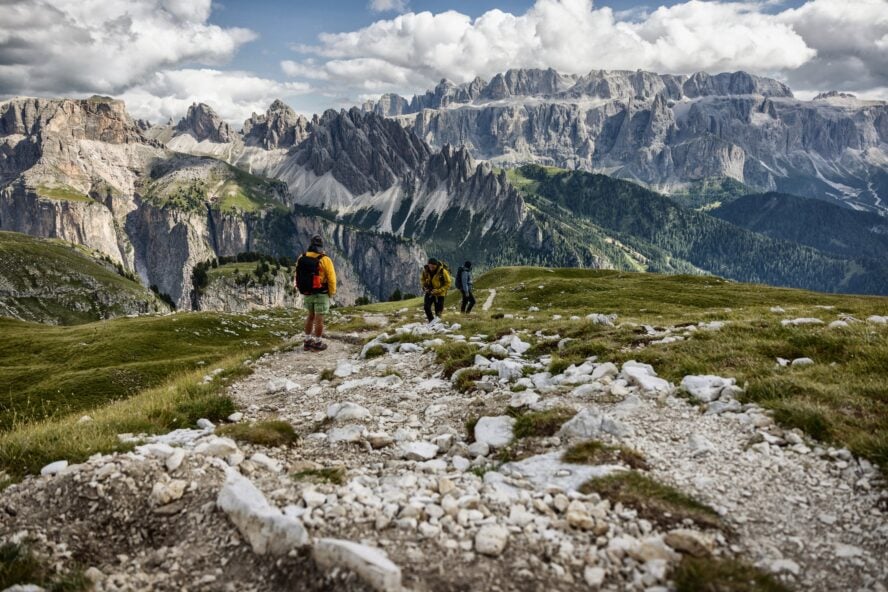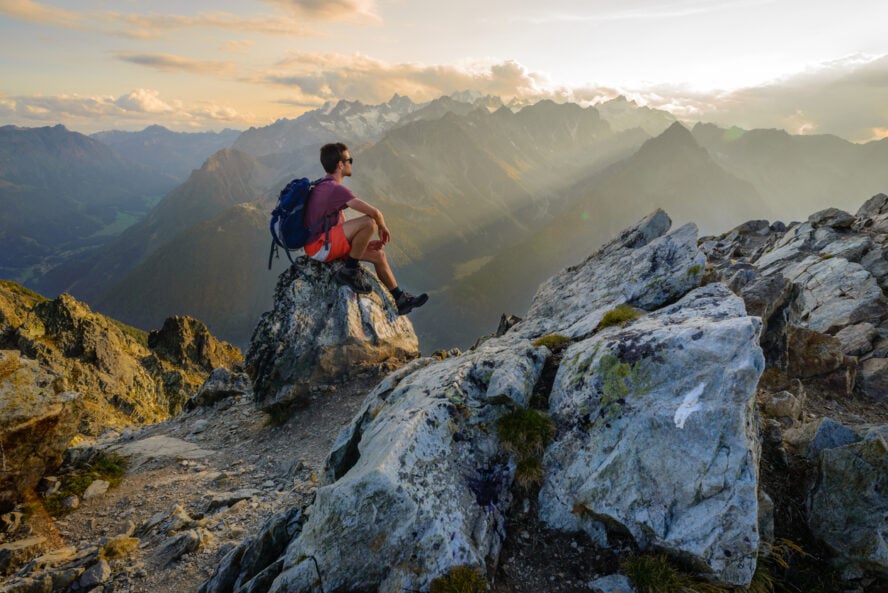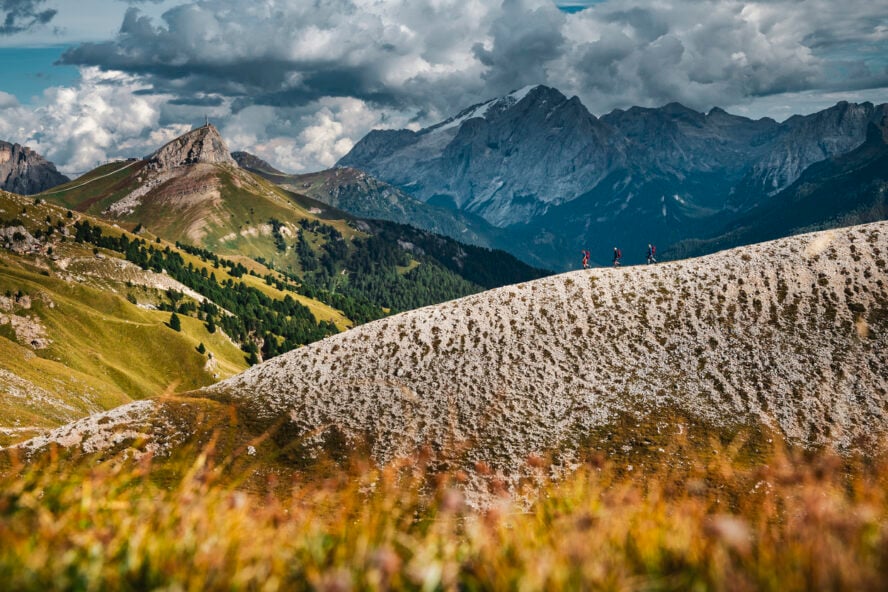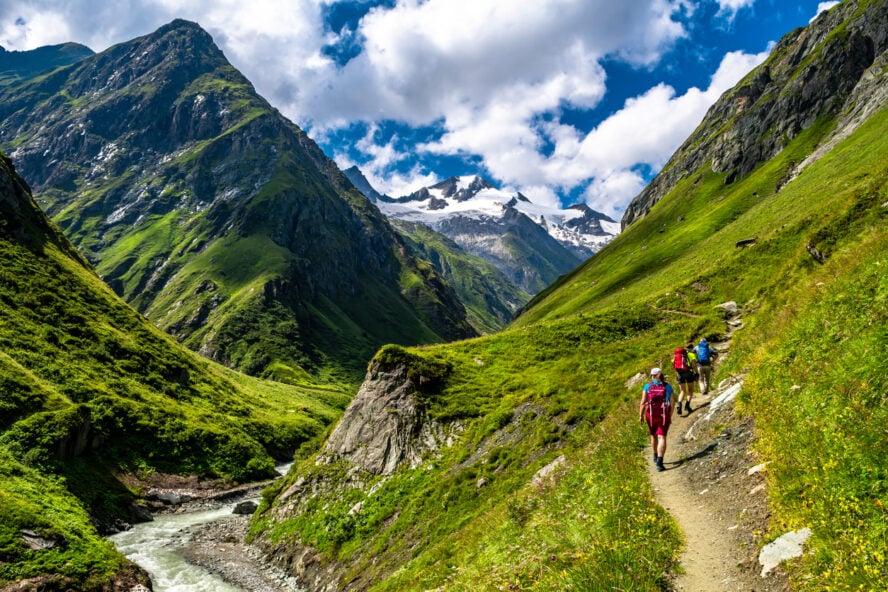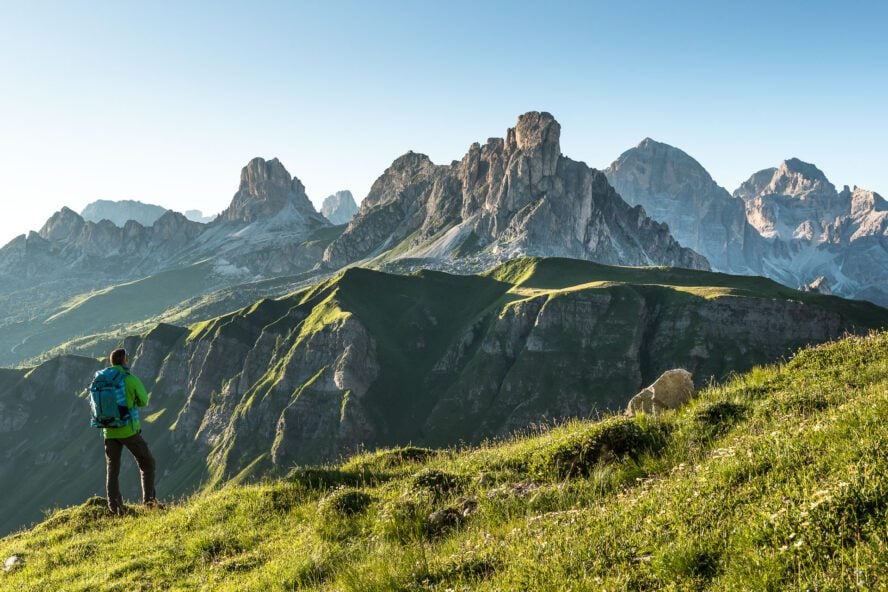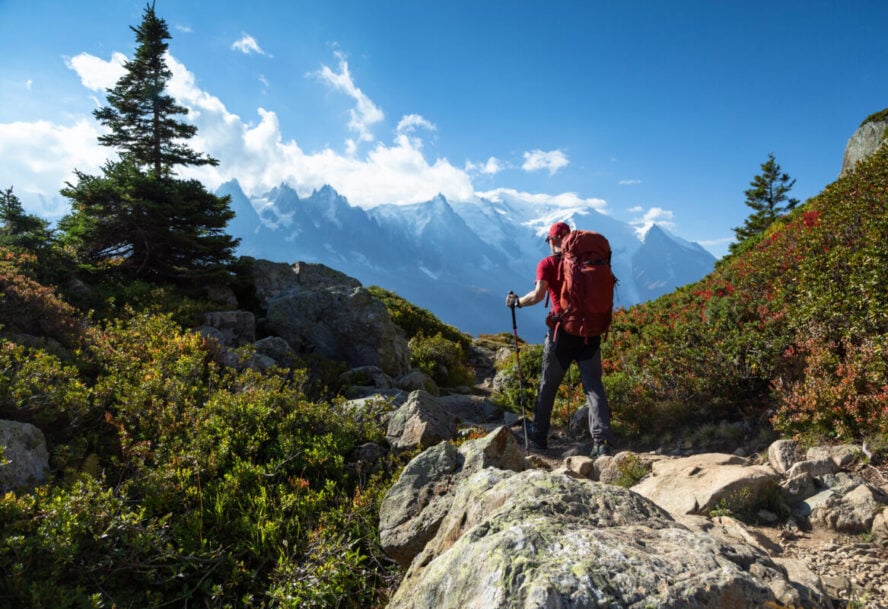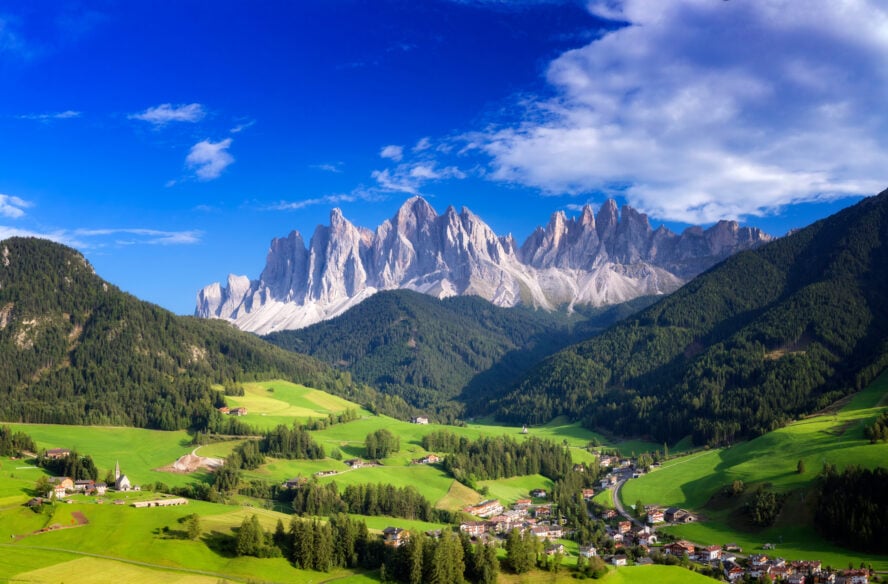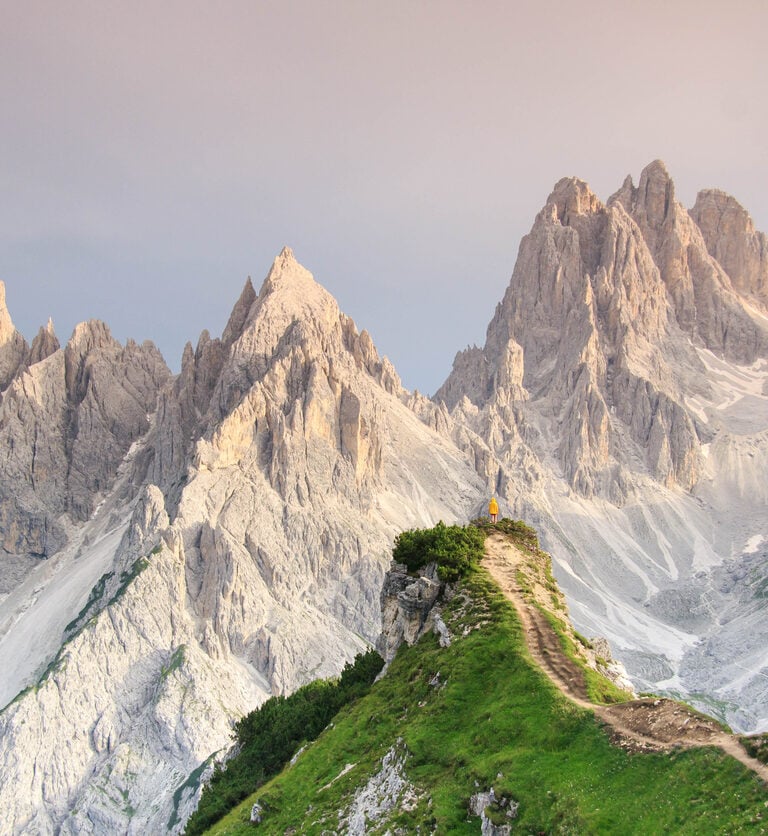The Dolomites are a world unto themselves. Jagged limestone peaks rise like cathedrals from green meadows, alpine lakes shimmer beneath them, and centuries-old villages dot the valleys below. If you come here to hike, climb, or ski, you’ll quickly realize one thing: where you choose to stay in the Dolomites shapes your entire experience.
No matter if you dream of waking up to sunrise over Tre Cime di Lavaredo, sipping espresso in Cortina’s cafés, or stepping straight from your rifugio into a sea of morning mist, your basecamp in the Dolomites defines your adventure.
But with six provinces, dozens of valleys, and hundreds of towns — each with its own rhythm and charm — choosing where to stay can be as dizzying as the altitudes themselves.
We’ll break it all down: the best areas for summer hiking, winter skiing, and car-free travel, plus where to find that perfect mix of comfort, authenticity, and trail access.
Because in the Dolomites, where you sleep is just another part of the journey.
So, Where to Stay in the Dolomites?
It’s better to think of the Dolomites as a mosaic of distinct regions rather than a single, continuous range. Stretching across northern Italy — between Trentino, South Tyrol (Alto Adige), and Veneto — the Dolomites offer dozens of unique bases, each with its own landscape, language, and vibe.
Here’s the quick overview of the 6 most popular destinations before we go deep:
-
Cortina d’Ampezzo: The “Queen of the Dolomites,” perfect for first-timers. Central, scenic, upscale, and surrounded by some of the best hikes in the Dolomites, like Tre Cime and Cinque Torri.
-
Val Gardena: A hiker’s and skier’s paradise with easy access to Seceda, Sassolungo, and the Sella Ronda circuit.
-
Alta Badia: Authentic Ladin culture, peaceful villages, and world-class mountain huts. Ideal for hikers planning on tackling the Alta Via 1 or Alta Via 2.
-
Val di Fassa: The best balance of accessibility, scenery, and family-friendly options. Great for both hiking and winter sports.
-
Alpe di Siusi: Europe’s largest alpine plateau. Full of gentle trails, stunning nature, and dreamy stays.
-
San Martino di Castrozza: Quieter, wilder, and ringed by some of the most dramatic rock towers in the Dolomites.
No matter where you choose, you’re never far from gondolas, trailheads, and unforgettable views. But each valley tells a different story. Let’s explore them season by season.
Where to Stay in the Dolomites in the Summer
Summer in the Dolomites is the season of freedom.
Meadows turn gold, rifugios are open, and trails fill with hikers from every corner of the world. From mid-June to late September, you can hike, bike, and climb almost anywhere, with reliable public transport and alpine huts in full swing.
Cortina d’Ampezzo: The Heart of the Dolomites
Cortina is the most famous base for a reason.
The resort town sits in the center of the Ampezzo Valley, surrounded by icons like Tre Cime di Lavaredo, Cinque Torri, and Lago di Sorapis. In summer, it’s the ideal launchpad for hikers and photographers who want easy access to the region’s highlights without sacrificing comfort.
We recommend staying in a cozy mountain lodge or boutique hotel near town. Options like Hotel de la Poste or Ambra Cortina offer a fun mix of Alpine charm and Italian style. Cortina also connects well to public buses and trailheads. Car-free travel is feasible here.
Where is it: In Veneto, northeastern Italy, surrounded by the Ampezzo Dolomites. Roughly 2 hours north of Venice. Location
How to get there: The easiest route is by bus from Venice Marco Polo Airport or Treviso Airport (about 2.5–3 hours). You can also drive via the A27 highway to Ponte nelle Alpi, then follow SR48 to Cortina.
Best for: First-timers, photographers, families, and classic Dolomites hikes.
Val Gardena: High Routes and Mountain Views
Nestled beneath the mighty Seceda ridgeline and the Sassolungo massif, Val Gardena is heaven for hikers.
The villages of Ortisei, Santa Cristina, and Selva di Val Gardena sit like pearls along the valley, each with easy lift access to amazing high-altitude trails.
The famous Seceda ridgeline hike starts right from Ortisei, while the Sella Ronda loop and Puez-Odle Nature Park trails are within easy reach. Rifugios like Fermeda Hütte and Rifugio Firenze are perfect for overnights in the high country.
Where is it: In South Tyrol (Alto Adige), about 40 km east of Bolzano. Location
How to get there: Drive or take a train to Bolzano, then a regional bus to Ortisei (1 hour). In summer, lifts and buses connect all three villages, so you can stay car-free with ease.
Best for: Hikers who want direct lift access, ridge walks, and strong infrastructure.
Alta Badia: Quiet Beauty and Ladin Hospitality
Alta Badia, in South Tyrol, offers a gentler, more authentic experience.
Villages like Corvara, Colfosco, and La Villa sit amid rolling meadows and craggy peaks, and immersing yourself in the local Ladin culture will add warmth and depth to your stay.
It’s also a key point along the Alta Via 1 and 2, which makes it a great stop for multi-day trekkers. You’ll find top-notch rifugios here, like Rifugio Lagazuoi and Rifugio Fanes, famous for their food and sunrises.
Where is it: In the heart of South Tyrol, bordering Val Gardena and Cortina, surrounded by the Sella Group and Fanes-Sennes-Braies Natural Park. Location
How to get there: From Bolzano or Brunico, take regional buses or drive along SS244 via Corvara. It’s around 2.5 hours from Bolzano and 3 from Venice.
Best for: Culture-seekers, hut-to-hut hikers, and those craving tranquility.
Val di Fassa: Budget-Friendly, Accessible All-Rounder
Located in Trentino, Val di Fassa connects seamlessly to other regions while offering great value and variety.
The villages of Canazei, Campitello, and Vigo di Fassa serve as hubs for day hikes and via ferratas around the Sella and Marmolada groups.
Canazei, in particular, has a lively summer scene, with plenty of accommodation, restaurants, and gear shops. Trails like the Viel del Pan and Col Rodella are right on your doorstep.
Where is it: In the Trentino region, south of Val Gardena and east of Bolzano. Location
How to get there: Drive from Verona (3 hours) or Bolzano (1.5 hours), or take a train to Trento and continue by bus. The SS48 road runs the length of the valley, connecting all major towns.
Best for: Active hikers, families, and budget-conscious travelers.
San Martino di Castrozza: Wild and Underrated
If you want to escape the crowds, San Martino is a gem. The Pale di San Martino range — all spires and pink limestone — is one of the photogenic places to stay in the Dolomites.
Trails lead straight into the UNESCO-listed Paneveggio Natural Park, where chamois roam and sunsets turn the cliffs gold.
Stay at Hotel Colbricon Beauty & Relax or book a night at Rifugio Rosetta, which sits high above town with views that feel infinite.
Where is it: In the southern Dolomites of Trentino, about 100 km east of Trento. Location
How to get there: The nearest train station is in Feltre or Trento, followed by a 1.5-hour bus or drive on the SS50.
Best for: Solitude, serious hikers, photographers looking for wild terrain.
Where to Stay in the Dolomites in the Winter
In winter, the Dolomites transform into a snow-draped wonderland. A dream for skiers, snowshoers, and anyone chasing that alpine high of firelight and powder. The Dolomiti Superski area connects 12 resorts with over 1,200 kilometers (800 miles) of slopes. It’s one of the largest ski networks in the world.
Cortina d’Ampezzo: Glamour Meets Adventure
Winter in Cortina feels like stepping into a snow globe. The town glows with après-ski charm, and its slopes are both scenic and accessible. Stay at Rosapetra Spa Resort for luxury, or go for a cozy chalet near the Faloria or Tofana lifts.
Beyond the skiing, Cortina shines for snowshoeing and ice climbing. It’s the perfect place to try that legendary mix of mountain adventure and la dolce vita.
Where is it: In the Veneto region, surrounded by the Ampezzo Dolomites. Location
How to get there: 2.5 hours from Venice Airport by Cortina Express bus or car; winter shuttles run daily.
Best for: Luxury travelers, skiers, and winter photographers.
Val Gardena: Ski-in, Ski-out Perfection
Val Gardena’s three main towns (Ortisei, Santa Cristina, Selva) link directly into the Sella Ronda circuit, famous for its seamless skiing across four valleys. You’ll find modern lifts, charming alpine hotels, and mountain huts serving hearty South Tyrolean dishes between runs.
In winter, Val Gardena is all about convenience: world-class slopes, excellent infrastructure, and après-ski that blends German precision with Italian flair.
Where is it: Central Dolomites, in South Tyrol, on the north side of the Sella Group. Location
How to get there: Drive or take a train to Bolzano, then bus to Ortisei or Selva. Private transfers are also available from Innsbruck (2.5 hours).
Best for: Skiers and snowboarders who want access to the entire Dolomiti Superski area.
Alta Badia: Refined and Relaxed
Alta Badia’s winter scene is quieter but equally stunning. The slopes are wide, well-groomed, and ideal for intermediates. “Villages” like Corvara and La Villa have more of a refined feel, with cozy hotels, wellness spas, and Michelin-starred dining.
Don’t miss a mountain lunch with panoramic views at Rifugio Bioch. Or, ski to Rifugio Pralongià for sunset aperitifs above the clouds.
Where is it: South Tyrol, between Val Gardena and Cortina d’Ampezzo. Location
How to get there: From Bolzano, drive 2 hours via the Gardena or Campolongo passes. Buses connect from Brunico and Corvara in winter.
Best for: Food lovers, couples, and skiers who prefer serenity over crowds.
Val di Fassa: Family-Friendly Fun
Val di Fassa connects easily to the Sella Ronda and offers great value compared to more famous resorts. Its villages are welcoming, its runs varied, and its atmosphere authentically alpine.
Stay in Campitello or Canazei for quick lift access, or base in Pozza di Fassa for a quieter time.
Where is it: In Trentino, south of the Sella Group and north of Val di Fiemme. Location
How to get there: Trains to Trento or Bolzano, then local buses. Driving from Verona or Venice takes around 3 hours.
Best for: Families, mixed-ability groups, and skiers looking for balance between cost and access.
Where to Stay in the Dolomites for Hiking
If hiking is your main goal, focus on access to lifts, trailheads, and rifugios. The Dolomites’ trail system is extensive and incredibly well-marked, with most routes starting just outside town.
-
Cortina d’Ampezzo: Best for short day hikes and iconic landmarks (Tre Cime, Cinque Torri, Lago di Sorapis).
-
Val Gardena: Best for ridge walks (Seceda, Puez-Odle) and via ferrata access.
-
Alta Badia: Best for long-distance trekking (Alta Via 1 & 2).
-
Val di Fassa: Best for its variety: dozens of trails, from meadows to glaciers.
-
Alpe di Siusi: Best for gentle, scenic hikes suitable for beginners.
If you want to combine comfort and access, spend a few nights hut-to-hut in rifugios like Lagazuoi, Fanes, or Tissi. You’ll find hearty meals, dorm-style lodging, and views you’ll never forget in these refuges.
Where to Stay in the Dolomites for Skiing
The Dolomiti Superski network connects some of Europe’s most beautiful ski areas. Your choice of base determines what and how you’ll ski.
-
Cortina d’Ampezzo: Classic glamour, great freeriding, and incredible scenery.
-
Val Gardena: Best all-around access to the Sella Ronda and top infrastructure.
-
Alta Badia: Smooth slopes, great food, relaxed pace.
-
Arabba/Marmolada: For experts chasing steeper terrain and longer descents.
-
Val di Fassa: Affordable and family-friendly with easy Sella Ronda access.
Wherever you ski, don’t miss the Rifugio lunches. Polenta with venison, apple strudel, and espresso served 2,000 meters above the valley.
Where to Stay in the Dolomites Without a Car
Traveling car-free in the Dolomites is surprisingly easy. Most major towns connect via public buses or trains, and summer lift systems make reaching high trails a breeze.
Best car-free bases:
-
Cortina d’Ampezzo: Well-connected by bus from Venice and Bolzano. Local buses reach Tre Cime, Lago di Misurina, and Cinque Torri.
-
Val Gardena (Ortisei): Linked by train to Bolzano, then bus to town; lifts start in the village.
-
Alta Badia: Accessible via bus from Brunico or Cortina, though transfers may be needed.
-
Bolzano: Great gateway city with easy rail and bus links to all Dolomites regions.
Once you’re based, you can rely on Dolomiti Bus, SAD Südtirol Mobil, or Cortina Express. They are efficient, punctual, and eco-friendly (and the rides are really scenic). Note that you might need to occasionally mix public transport with local taxis to access more remote trailheads or rifugios.
Frequently Asked Questions About Where to Stay in the Dolomites
When is the best time to visit the Dolomites for hiking?
The main hiking season runs from late June to late September. It’s when the snow has melted and rifugios are open. July and August will have the most stable weather, but also the biggest crowds. For quieter trails and golden light, we recommend aiming for mid-September. The larches turn orange, and the peaks glow pink at sunset.
Do I need to book rifugios in advance?
Yes, especially in July and August. Rifugios fill quickly, particularly along popular multi-day hiking routes. Book at least 1–2 months in advance, and confirm if they accept credit cards (many still prefer cash). Always carry a sleeping bag liner and headlamp.
Is it possible to visit the Dolomites without hiking experience?
Absolutely. Many towns offer cable cars that whisk you to panoramic viewpoints, gentle walking paths, and guided tours. Alpe di Siusi and Cortina are particularly beginner-friendly. There, you’ll find plenty of short trails, easy navigation, and mountain cafés for rest stops.
What’s the best airport for the Dolomites?
The nearest major airports are Venice (VCE), Innsbruck (INN), and Bolzano (BZO). Venice is the most common entry point, with direct bus transfers to Cortina d’Ampezzo in about 2.5 hours.
How many days should I spend in the Dolomites?
For hiking, plan a minimum of 5–7 days. You’ll have time for 3–4 big hikes and some downtime. If you’re doing a multi-day trek, aim for an extra day or two before and after the hike to include travel and rest days. In winter, a week gives you a good taste of skiing, culture, and cuisine.
What’s the food like in the Dolomites?
It’s mountain food with Italian flair: polenta with mushroom ragu, alpine cheeses, apple strudel, and homemade pasta. Each region mixes Austrian, Italian, and Ladin influences. Our recs include canederli (dumplings), speck (smoked ham), and local wines like Lagrein and Gewürztraminer.
Where You Stay In the Dolomites Defines Your Entire Trip
The Dolomites aren’t just a destination. They’re an experience shaped by where you wake up. The crisp air of a high rifugio, the cozy glow of a valley chalet, the first espresso in a mountain village square – every corner of these peaks tells its own story.
Wherever you land, you’ll find the same sense of wonder that draws climbers, hikers, and dreamers back year after year.
Because in the Dolomites, your adventure begins not when you lace your boots, but when you open your window and see the light touch the limestone towers outside. That’s what life is all about.

